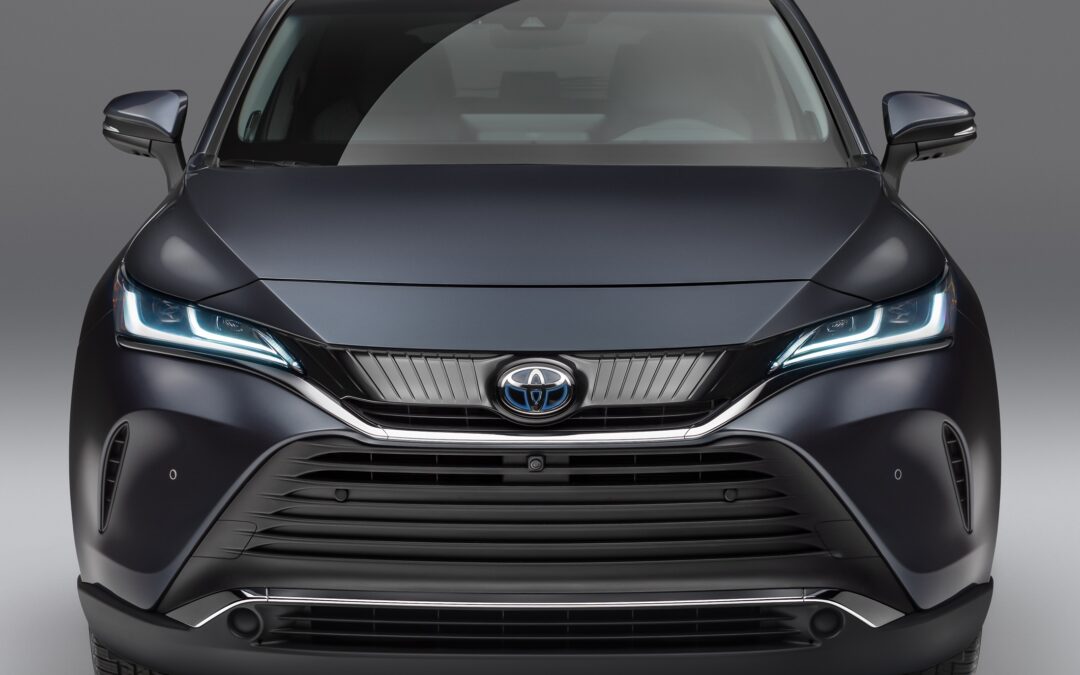2021 Toyota Venza to go on sale in August; Sienna by year’s end
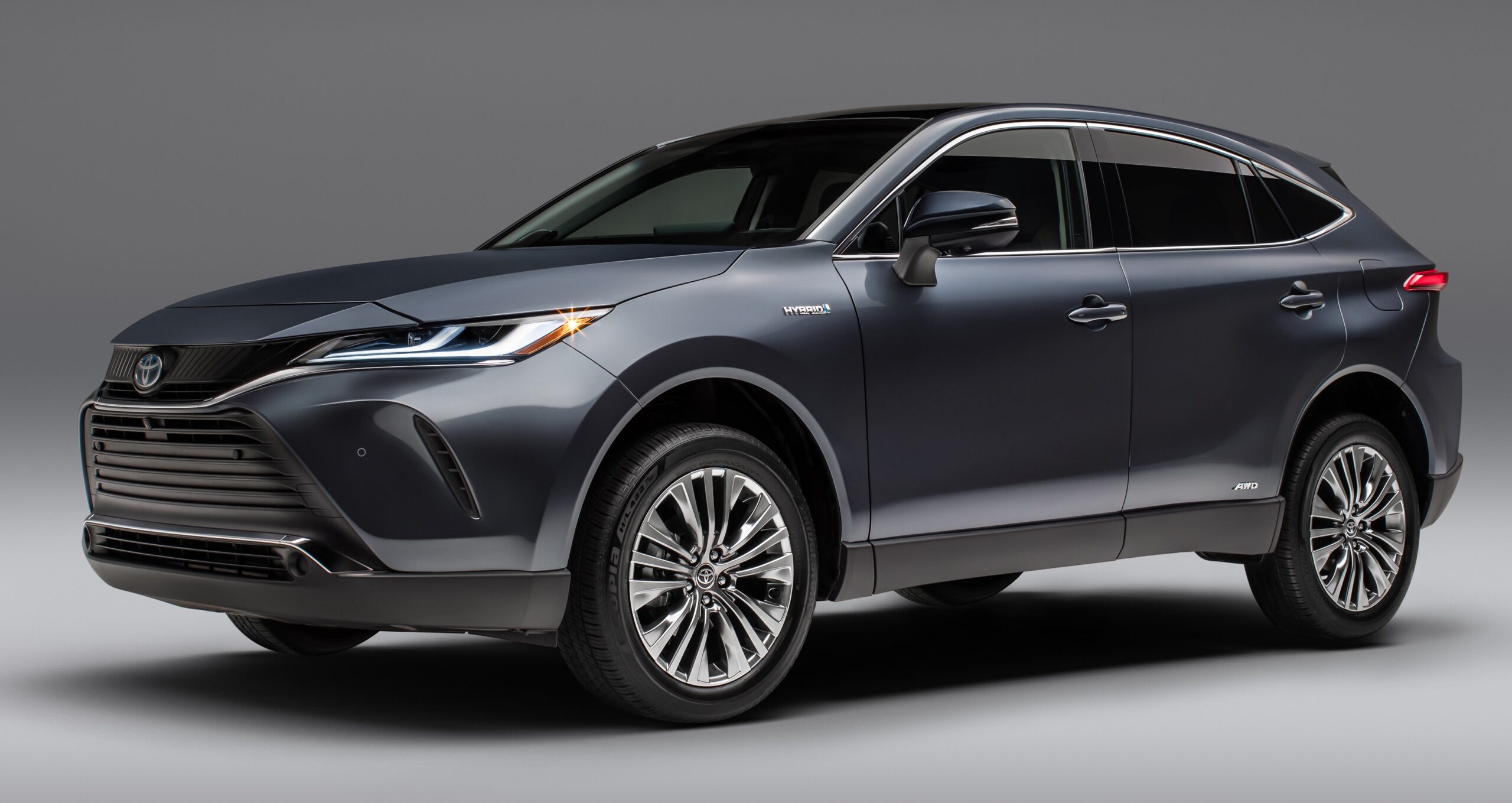
Toyota Motor held a virtual press conference today, May 18, to debut two hybrid vehicles that the company says will help propel it to offering electrified powertrains on its entire model line worldwide by 2025. The 2021 Toyota Venza midsize SUV crossover and Sienna minivan will have gasoline-electric hybrid powertrains, more luxurious features and full infotainment and safety technologies. Venza will go on sale around August and the Sienna in late 2020.
Positive signs are emerging, said Bob Carter, executive vice president of sales for Toyota Motor North America, as he opened the reveal via teleconference from headquarters in Plano, Texas.

Toyota Sienna notes
The fourth-generation 2021 Sienna minivan will have a standard gasoline-electric hybrid powertrain across all trim levels. Options include all-wheel drive and a limo-like option for Super Long Slide second-row captain chairs with a stowable middle seat.
“This is an all-new vehicle from the ground up, including a new chassis platform as well as a new electrical platform,” said Chief Engineer Monte Kaehr in a release.

Designed, engineered, and assembled in the U.S., the minivan will debut kick-open and closed sliding side doors and a rear liftgate. An optional vacuum and refrigerator will be available. Other new features include a tilt and telescoping steering column with a heated steering wheel, which Toyota says is a segment first. Tech upgrades include a digital camera rearview mirror, 10-inch color head-up display, and a 12-speaker JBL premium audio system.

The Sienna’s exterior was designed by Toyota’s studios in Newport Beach, Calif., and Ann Arbor, Mich. The front design was inspired by the Shinkansen Japanese bullet train “to appear sleek, speedy and confident,” Toyota says.
With seats for seven or eight occupants, the three-row Sienna will debut a new option for Super Long Slide second-row captain chairs with a stowable middle seat. Occupants will have fore-aft seat travel of 25 inches for unprecedented legroom, Toyota says. The seats can be paired with an optional ottoman feature.
The Sienna with AWD has a tow rating of 3,500 pounds. The minivan can be optioned with a 1,500-watt inverter with a 120-volt household outlet. It can be used to power small appliances for camping, tailgating, or home improvement.
Pricing for 2021 models has not been announced, but starting prices for the 2020 Sienna range from about $32,000 to $50,000 with AWD.

Safety
Standard safety technologies on both vehicles will include the second-generation Toyota Safety Sense (TSS 2.0). It integrates a pre-collision system with pedestrian and bicyclist detection with low-light detection, full-speed-range dynamic radar cruise control, lane-departure alert with steering assist, lane-trace assist, and road-sign assist. The pre-collision system initiates automatic braking should the driver not react in time in certain emergency situations.
Full specifications will be released later but the hybrid powertrain in the Sienna is a 2.5-liter four-cylinder engine with two electric motors and a nickel-metal hydride battery. The powertrain has a combined 243 horsepower. All-wheel-drive models will use a third electric motor to drive the rear wheels. The Sienna has a manufacturer-estimated 33 combined MPG fuel economy, a benchmark for the segment, Toyota says.
The three-motor system in the Toyota Venza is just about the same as for the RAV4 Hybrid, but with a lithium-ion battery replacing nickel-metal hydride. The powertrain has 219 total horsepower and an estimated combined fuel economy of 33 mpg.
Hybrid-related components that require repairs needed to correct defects in materials or workmanship are covered for 8-years/100,000-miles. The hybrid battery is covered for 10-years/150,000-miles, whichever comes first, and is transferrable across ownership.
Toyota has sold 15 million electrified vehicles to date through nine models, Carter said. “Nine is nice, but we have room for another hybrid in the lineup,” he said.
The Venza will bring the number of Toyota hybrids to 10 – or 11 with the Mirai fuel cell – for 2021, more than any other brand, Toyota says.
The business plan is to achieve 25 percent of global income from electrified vehicles by 2025, Carter said.
Pricing and more specifications will be released closer to the on-sale date for both vehicles.

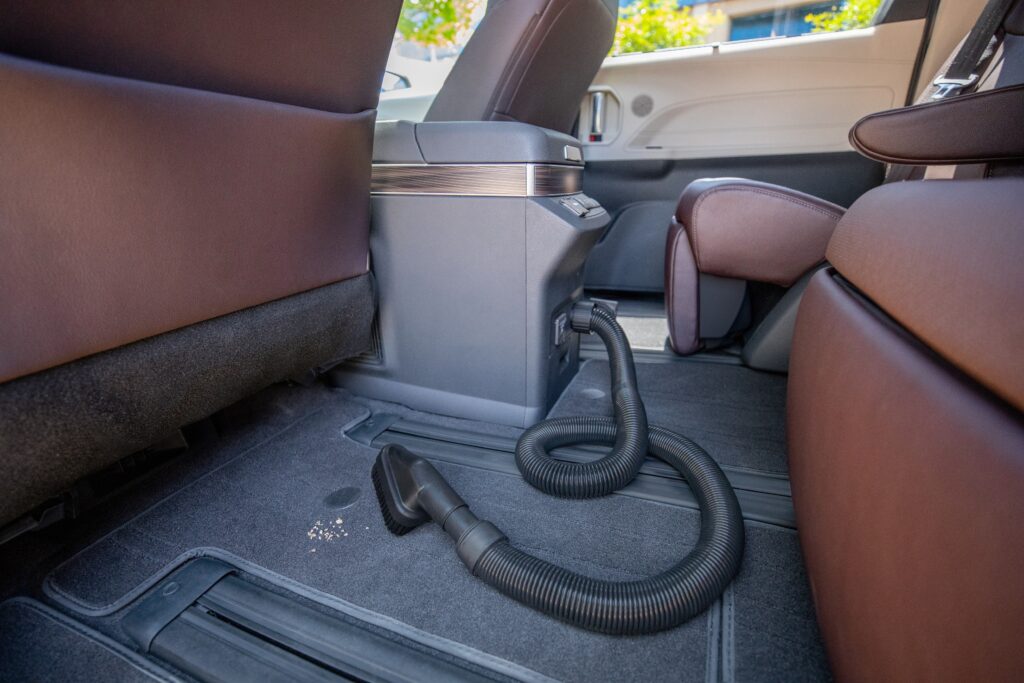
Sienna styling
Minivans are the most efficient mode of moving people but most of those people today prefer to be moved in a vehicle that looks more like an SUV. So, Toyota tried to provide the experience of an SUV in the Sienna but with minivan comfort and ease of access.
The exterior design was a joint effort by Toyota’s studios in Newport Beach, Calif., and Ann Arbor, Mich. The front end was inspired by a Japanese bullet train “to appear sleek, speedy and confident,” Toyota says.

The headlights are mounted high and stretched around to the sides as if shaped by the wind. The lower grille is contrasted by slim, high tech LED fog lights that are pushed to the corners, to emphasize width and stability.
A sporty XSE model is set apart by dark 20-inch split five-spoke wheels (the biggest wheels yet on a Sienna, Toyota says) and aggressive front and rear bumpers.
The driver area was reconfigured to include an instrument panel of horizontal layers with a large center touch-screen display, small-item storage and the Bridge Console, which connects the instrument panel to the center armrest. The ergonomically designed console is positioned high between the driver and passenger.
The design places the shifter and necessary functions within easy reach, along with cup holders, available wireless charger and storage areas for smaller items, Toyota says. Beneath the bridge is a large open area for convenient storage of larger personal items such as a purse or bag.
Standard equipment
All Sienna trim levels will have:
• 9-inch touch-screen display;
• Six-speaker audio system with Android Auto, Apple CarPlay and Amazon Alexa;
• Seven USB ports;
• Hands-free Bluetooth phone and music streaming;
• Power windows with one-touch up and down;
• Dual, power sliding side doors. (Kick-type sliding doors and a power tailgate standard on XLE and higher trim levels.)
• Three-zone climate control;
• Fabric upholstery with eight-way power driver’s seat. (Softex leatherette trimmed seats on upper trim levels.)
• Second-row sunshades.
Safety
Standard safety technologies include the second-generation Toyota Safety Sense (TSS 2.0), an active safety system that includes:
• Pre-Collision System with pedestrian detection with low light detection
• Full-speed-range dynamic radar cruise control
• Lane departure alert with steering assist
• Lane trace assist
• Road sign assist
The pre-collision system provide automatic braking should the driver not react in time in certain emergency situations. The PCS system can also detect a bicyclist and even a pedestrian in low-light situations.
Other standard safety features include 10 air bags (including a driver’s knee bag and a passenger-seat-cushion air bag), blind-spot monitor with rear cross traffic alert.
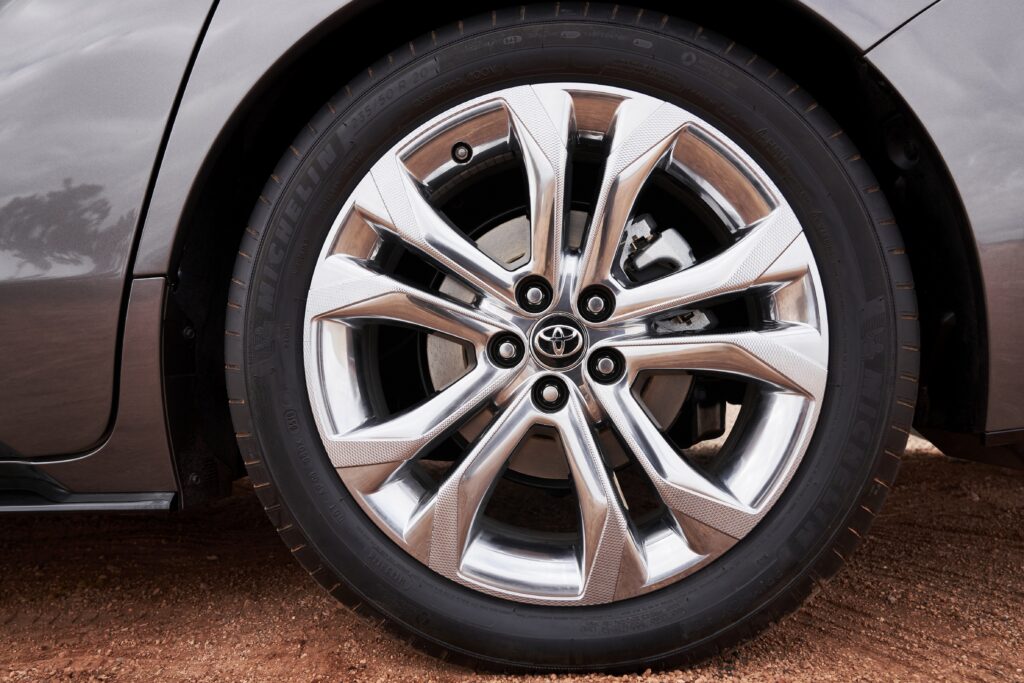
Hybrid system
The Toyota Hybrid System II in the Sienna will deliver 243 total horsepower and have a manufacturer-estimated 33 combined MPG fuel economy, a benchmark for the segment, Toyota says. What will be noticeable, Toyota says, is the kick in low-speed torque from two electric motors working with the 2.5-liter four-cylinder engine.
Battery warranty
The powertrain warranty covers all hybrid-related components, including the HV battery, for 10-years/150,000-miles, whichever comes first. Hybrid-related components that require repairs needed to correct defects in materials or workmanship are covered for 8-years/100,000-miles.
AWD
During off-the-line starts in Sienna or Venza, the all-wheel-drive system can send up to 80 percent of power to the rear wheels to help prevent front-wheel slip. The Hybrid AWD system enhances cornering agility by helping to reduce understeer for a more confident handling feel, Toyota says.
Instead of a heavy AWD transfer case and space-robbing driveshaft to the rear wheels, electronic on-demand system uses a third electric motor.
PED
Using the navigation system in both vehicles, the Predictive Efficient Drive analyzes driving habits and memorized road and traffic conditions to optimize hybrid battery charging. When the driver activates PED, the system learns repeating routes and can predict when and where the vehicle is likely to slow down or stop. Then, through optimum accelerator pedal release timing guidance, the feature can reduce energy consumption.
2021 Toyota Venza
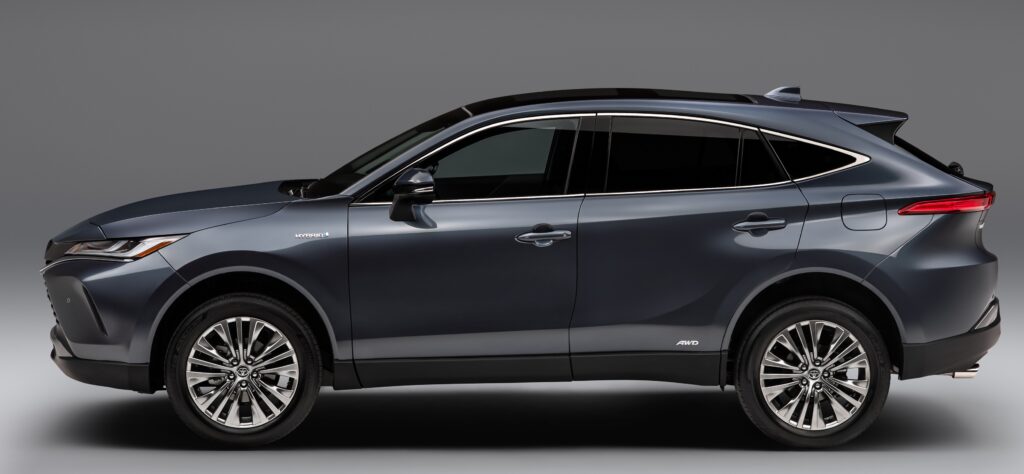
The midsize Venza debuts a revived nameplate last used in 2015 for the discontinued wagon. It is built on the same TNGA-K platform as the Highlander and RAV4 and is known as the Harrier in Japan. (It’s also similar in stance and styling to the Lexus NX.)
The midsize two-row, five-seat crossover utility vehicle is intended to fill a gap in Toyota’s lineup of seven SUVs and crossovers and fits between the compact RAV4 and large-midsize Highlander SUV. It is expected to have an estimated 40 mpg in combined fuel economy, Toyota says.
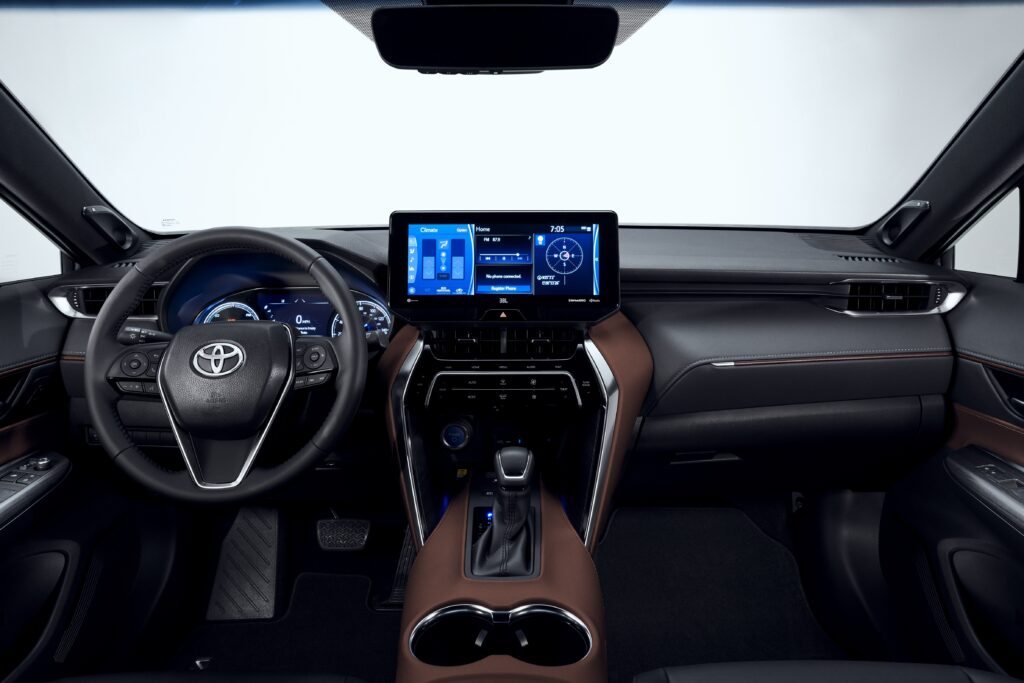
The lithium-ion battery pack is small enough to be installed under the rear seats, so it does not take up any cargo or passenger space.
Optional features will include the new Star Gaze fixed panoramic glass roof. The electrochromic glass technology allows drivers to switch from transparent to frosted modes, with UV protection from sunshine. Other upgrades include a 12.3-inch touch-screen display with a nine-speaker JBL audio system and a digital rearview camera mirror.
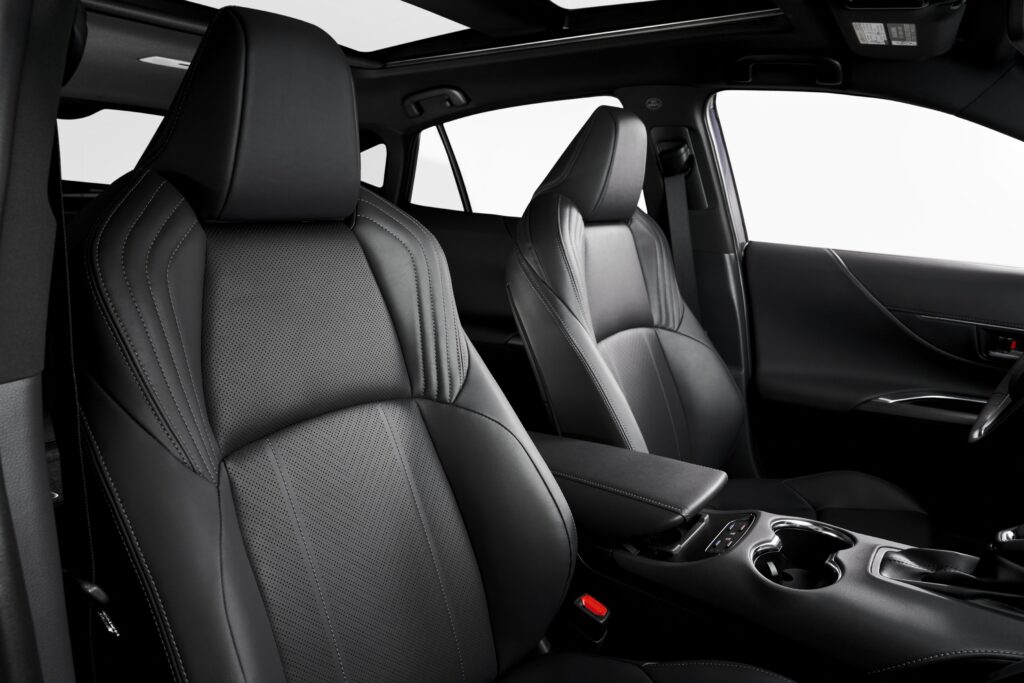
Seats
Venza has eight-way power driver seats on all grades with a four-way passenger on the Limited (but no height adjustment). The power driver’s seat integrates an auto slide-away function that on entry or exit, the seat automatically moves to the rearmost position to optimize ingress and egress. When the Venza is started, the seat moves to the last position set by the driver.
Ventilated front seats are standard on Limited and draw cool air from the air conditioning system into the seats. The ventilated seat option integrates S-FLOW cooling technology (from Lexus) that directs air conditioning only to occupied seats, helping to reduce energy consumption.

Soundproofing
Toyota says the Venza represents graceful grand touring, which it emphasizes with thorough soundproofing.
The high-strength TNGA-K platform is a rigid platform to block noise intrusion, Toyota says, which helps curb vibration through the steering, floor and structure. From there, suspension tuning resists road surface disturbances, tire noise is reduced via strategically placed insulation and an acoustic glass windshield helps minimize wind noise.
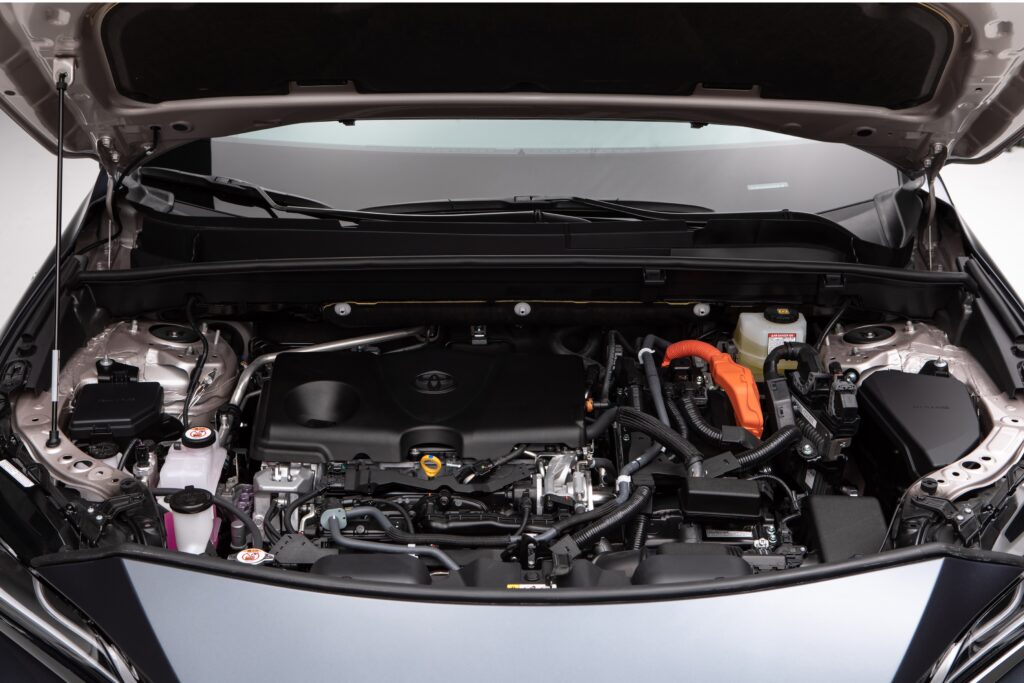
Sound-blocking and absorbing insulation with body-sealing material are placed throughout the structure, under the carpeting, and above the headliner. The materials and their placement were optimized to minimize the noise in the frequencies that typically interfere with conversation, Toyota says.
As one example, the floor silencer pad is one large piece rather than separate segments. The pad’s surface coverage reaches about 92 percent. Holes and gaps between parts are filled in with sound-damping material for greater road-noise reduction.
Under the hood, sound-absorbing insulation around the engine compartment helps reduce intake noise, helped by the placement of two special resonance chambers that help minimize air intake noise in the 530Hz and 650Hz ranges.
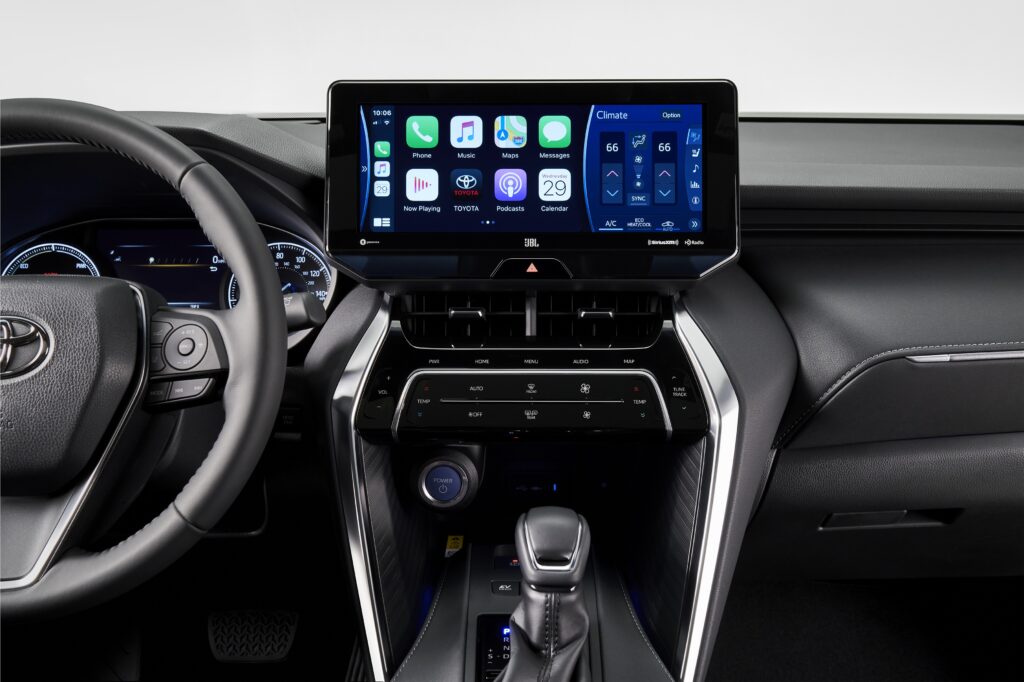
Toyota Venza Features
The new Star Gaze fixed panoramic glass roof uses electrochromic glass technology to switch from transparent to frosted modes, with UV protection.
The standard backup camera features projected path and dynamic gridlines, while an available rear camera cleaning system sprays washer fluid to clear away water droplets, mud, snow and snow-melting road treatments from the lens.
The Limited model has a bird’s-eye view camera system with perimeter scan. It gives a panoramic overhead view of the vehicle’s surroundings.
Other upgrades include a 12.3-inch touch-screen display with a nine-speaker JBL audio system and digital rearview camera mirror. XLE and Limited grades have a standard smart key system for unlocking and push-button ignition.
Two-tone, 18-inch alloy wheels are standard with 19-inch standard on XLE and Limited, with super chrome finished alloy wheels.

Toyota Venza Storage
Cup holders can accommodate large drink sizes, while the center stack tray can handle the largest iPhone models. Bottle holders in the door panels can take 24-ounce bottles.
Cargo space behind the second row is up to 36.3 cubic feet, with no intrusion from the lithium-ion battery pack. It is small enough to be installed under the rear seats, so it does not take up any cargo or passenger space. The standard tonneau cover can be stored in the storage space beneath the deck board when not in use.
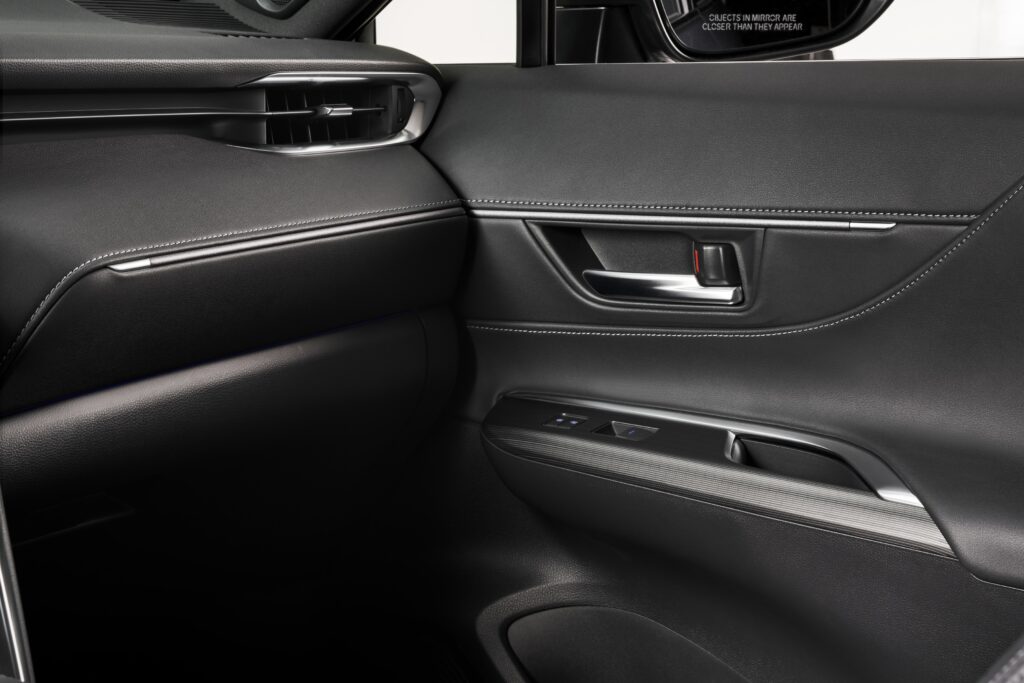
Infotainment in the Toyota Venza
Audio Plus is standard on LE and XLE and includes an 8-inch touch screen. Premium Audio with Dynamic Navigation and JBL is optional on XLE and standard on Limited. The system features a 12.3-inch touch-screen display with controls that can be switched between the driver or front passenger.
Connectivity features include Apple CarPlay, Android Auto and Amazon Alexa and Bluetooth wireless technology. Apple CarPlay includes access to Siri, while Android Auto connects with Google Assistant.

Cargo space has no intrusion from the lithium-ion battery pack. (Toyota)
All Toyota Venza grades come with a three-month trial for satellite radio Toyota Remote Services trial subscriptions. Available dynamic navigation features enhanced 2D landmark display, land guidance display, and freeway exit display. All Venza models will come equipped with Toyota Safety Connect with a one-year trial subscription.
Official pricing had not been announced at the time of posting this story. Industry sources, however, have reported Toyota Venza pricing should start around $35,000 and top out at around $45,000.


